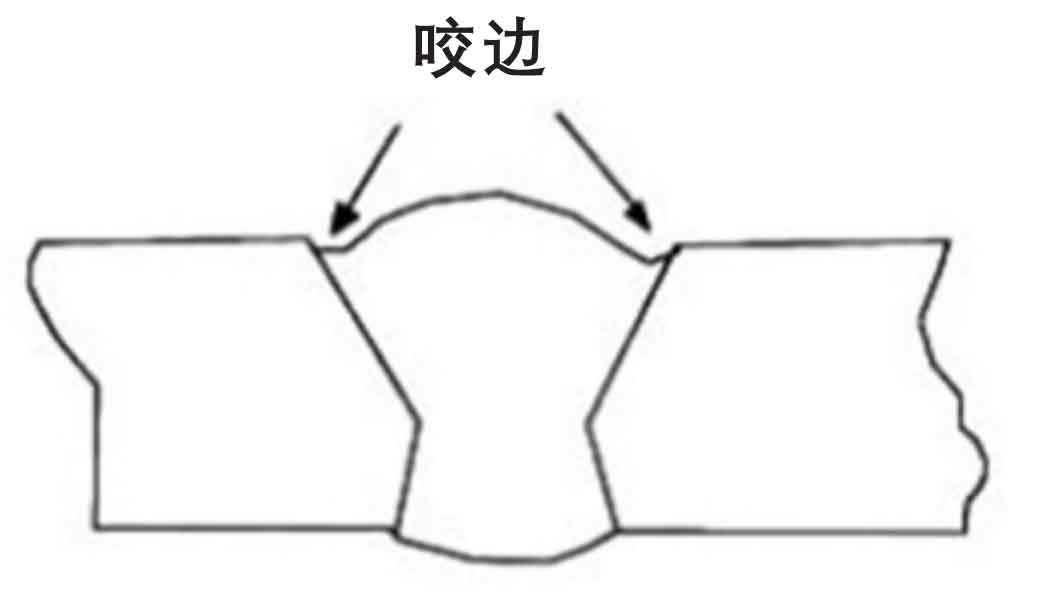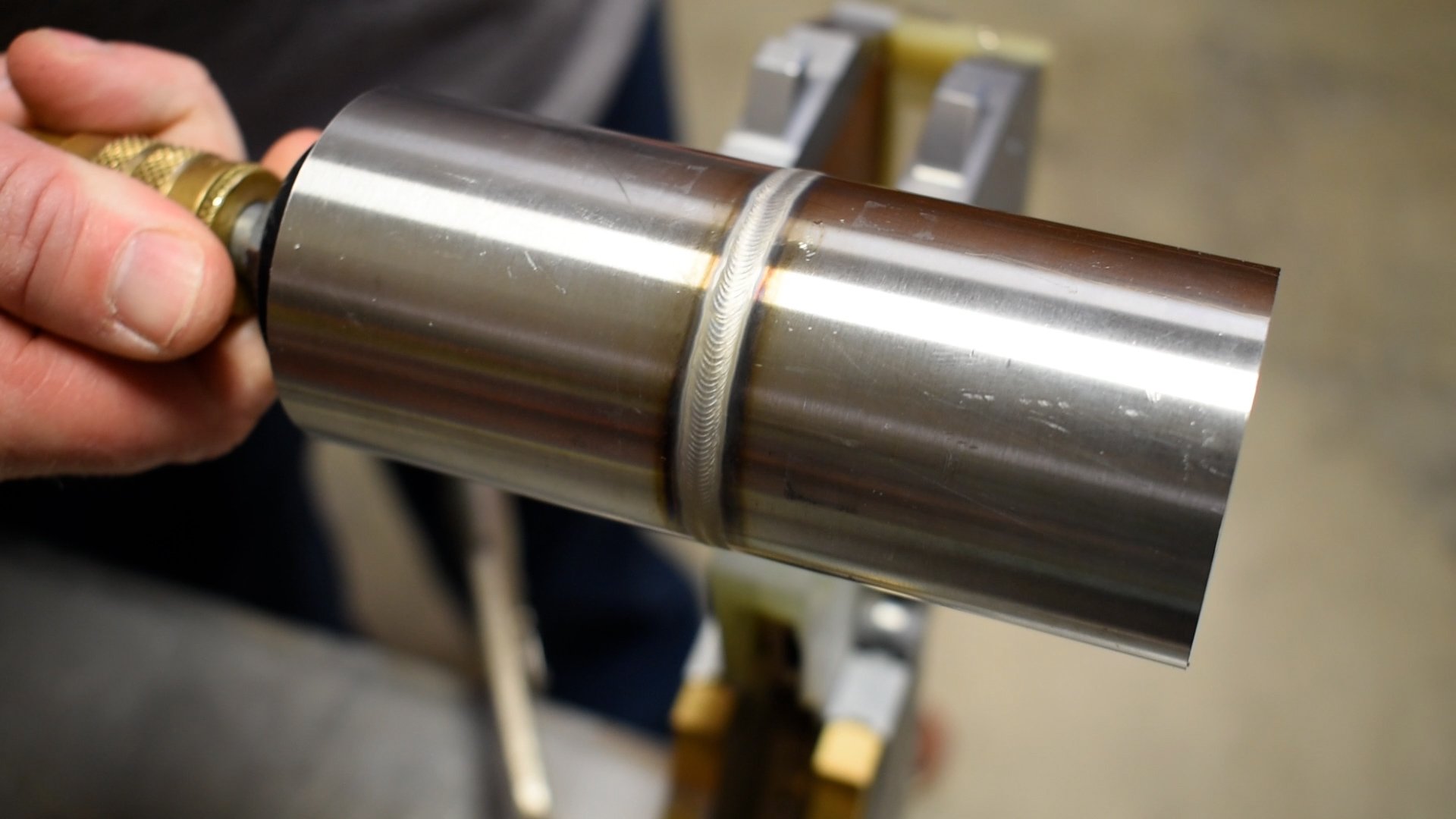Recognizing the Causes and Solutions for Undercut Welding in Metal Construction Processes
In the world of steel manufacture processes, the event of undercut welding presents a considerable challenge that requires an extensive understanding of its reasons and viable solutions. The intricate interaction of numerous variables throughout welding procedures can result in this undesirable phenomenon, affecting the structural honesty and overall top quality of the welded joints - Preventing weld undercut. By studying the source of undercut welding and exploring efficient restorative procedures, makers can boost the standard of their handiwork and make sure the manufacturing of remarkable steel elements
Typical Sources Of Undercut Welding
Regularly forgotten in metal construction, undercut welding takes place due to numerous elements that require thorough attention and competence to be properly mitigated. One usual source of undercut welding is extreme warm input. When the warm input is expensive, it can result in the melting and subsequent erosion of the base material along the edges of the weld joint, creating a groove or undercut. In addition, incorrect welding techniques, such as making use of the incorrect welding angle or travel speed, can additionally add to undercut formation. Insufficient protecting gas protection is one more crucial aspect that can result in undercutting. Inadequate gas protection stops working to safeguard the weld pool appropriately, resulting in oxidation and undercut problems. In addition, the option of welding parameters, such as voltage, current, and wire feed rate, plays a considerable role in the event of undercut welding. Recognizing these typical reasons is crucial for implementing preventative steps and guaranteeing premium welds in metal fabrication procedures.
Effect of Incorrect Welding Parameters
Inaccurate welding specifications can dramatically compromise the honesty and high quality of bonded joints in steel construction procedures. The impact of wrong welding parameters materializes in numerous means, leading to structural weaknesses and defects in the welded elements. Precise focus to welding parameters is critical to make sure the manufacturing of top notch welds with the wanted mechanical buildings and architectural integrity.
Result of Improper Lantern Angle
Incorrect lantern angle in welding procedures can considerably affect the quality and stability of the last weld joints in metal fabrication procedures. Damaging is a common welding issue where a groove creates along the weld toe, weakening the joint and compromising its structural integrity.
A torch angle that is also steep can result in insufficient infiltration, incomplete fusion, and increased spatter. On the various other hand, a torch angle that is also shallow can cause extreme penetration, burn-through, and distortion of the base material. Preventing weld undercut. Correct torch angle is crucial for making certain constant weld high quality, strength, and appearance
To stop damaging and various other flaws brought on by incorrect torch angles, welders must be educated to maintain the proper torch angle throughout the welding procedure. Normal tracking and change of torch angles throughout welding can assist attain sound welds with marginal flaws.
Role of Inadequate Welding Methods

An additional element of insufficient welding methods is incorrect weld preparation. Inadequate cleaning of the base steels, wrong joint layout, or not enough side preparation can all contribute to undercut welding. Inadequate shielding gas coverage or utilizing the wrong kind of gas can result in incomplete combination and the formation of undercut problems.
To address the duty of poor welding methods in steel manufacture procedures, it is important to give thorough training for welders. Proper education on welding parameters, joint prep work, and shielding gas option can aid avoid undercut welding and make sure high-quality welds in metal fabrication jobs.
Reliable Solutions for Undercut Welding
Addressing undercut welding in metal fabrication requires applying reliable solutions to boost weld top quality and structural stability. One of the key remedies to deal with undercut is to change welding parameters such as voltage, current, and travel speed to ensure proper warmth input and fusion. By fine-tuning these setups, welders can prevent extreme melting of the base steel and filler material, minimizing the possibility of undercut formation.
Furthermore, appropriate joint prep work is vital helpful site in protecting against undercut. Ensuring clean base steel surface areas devoid of contaminants and making use of the appropriate bevel angle can aid advertise far better weld infiltration and minimize the risk of undercut - Preventing weld undercut. Utilizing appropriate welding strategies, such as weaving or oscillating the torch, can likewise help in dispersing warmth evenly and filling the weld joint effectively, minimizing the possibility of undercut problems
Moreover, choosing the proper welding consumables, consisting of electrodes and filler steels, is essential in reducing undercut. Utilizing materials with suitable chemical structures and mechanical properties can contribute to achieving sound welds with minimal undercut. Regular inspection and quality assurance steps should likewise be carried out to identify and resolve undercut concerns without delay, making certain the total stability of produced metal components.

Verdict
Finally, recognizing the reasons and services for undercut welding in metal fabrication procedures is vital for accomplishing premium welds. By dealing with common reasons such as wrong welding specifications, incorrect torch angle, and poor welding methods, welders can avoid damaging and make sure strong, durable welds. It is vital to take notice of these aspects and execute reliable options to improve the total welding process and end product quality.
